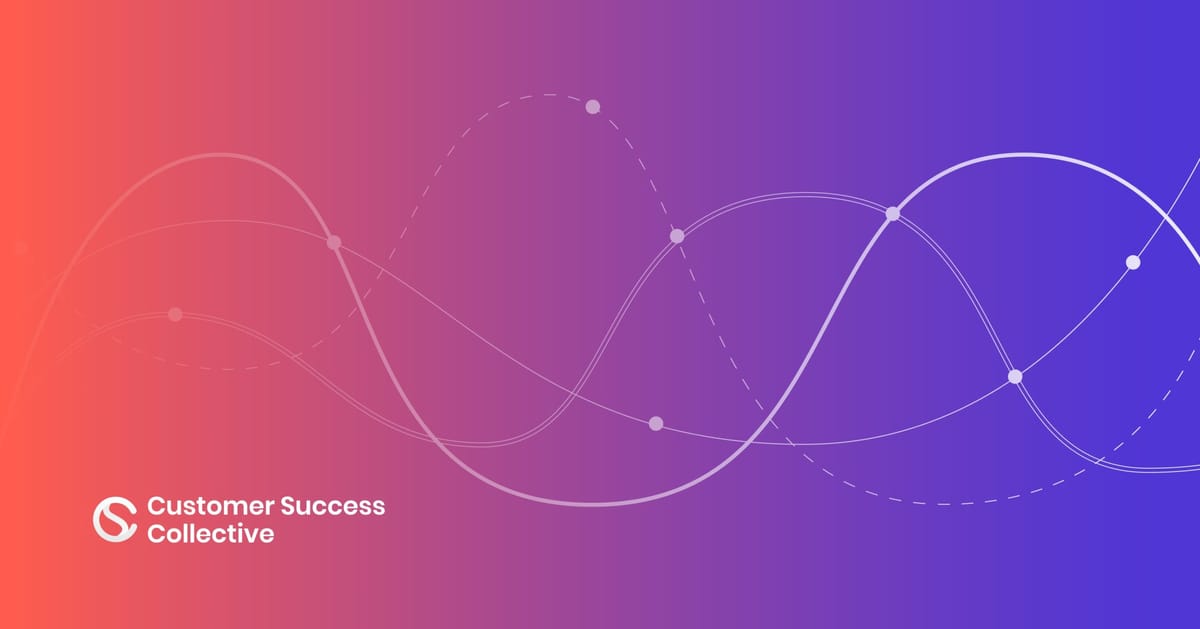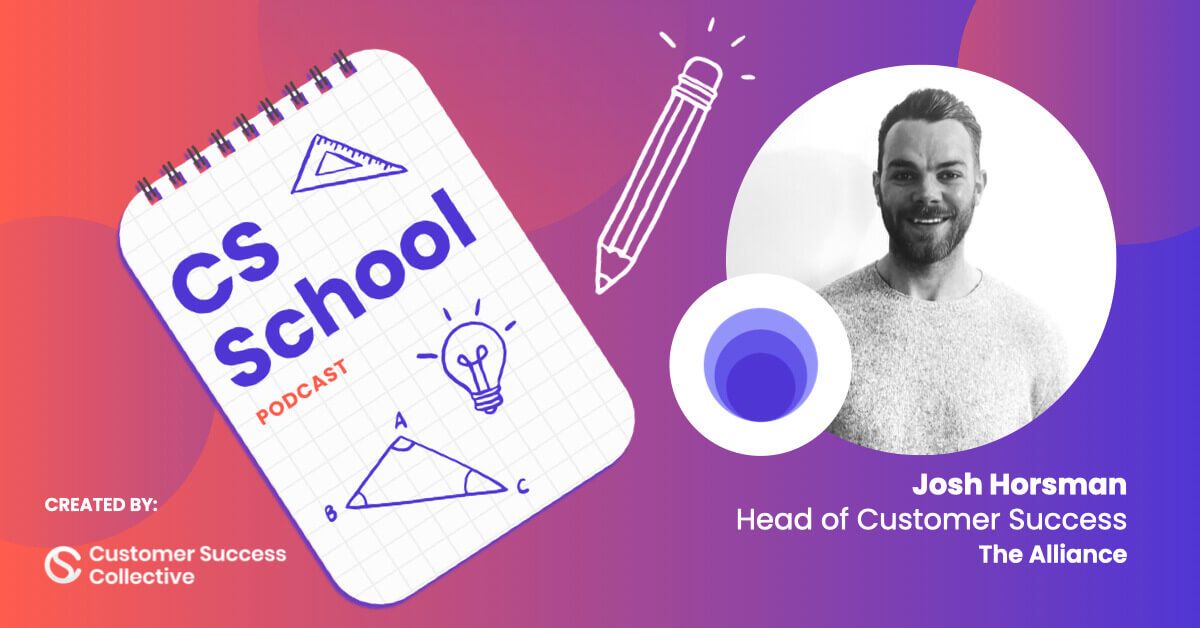Okay, let’s be real for a second. Data analysis sometimes feels like sifting through a haystack in search of one teeny, tiny needle. Yes, businesses operate on data analysis. Yes, you need to back up everything in business with hard, cold data. All three of these statements are true.
But in a world as hyper-connected and data-driven as ours, you need to filter out the wheat from the chaff; to cut through the noise. Customer success often finds itself balancing an empathetic, human-focused approach with rigorous data analysis. With a surplus of metrics and data points to measure, it's easy to get overwhelmed.
The key is identifying the insights that will truly empower customers and drive growth. And how do we do that? With a North Star metric.
In this article, we’re going to delve into:
- What a North Star metric is
- What a financial metric is
- How to differentiate between the two
- Examples of potential North Star metrics at leading companies
- 4 steps for choosing your North Star metric
- Why North Star metrics matter to customer success
- How to apply your North Star metric to customer success
- Why you should interrogate your North Star metric
What is a North Star metric?
Just as sailors and travelers have relied on the North Star for navigation for millennia, businesses can utilize the power of a “North Star metric” to chart their growth.
Your NSM, also sometimes known as a core metric, isn’t just a “nice-to-have.” It’s a vital indicator of a business's growth. How so? Well, a North Star metric provides tangible insights into whether the company is meeting the expectations of its customers and stakeholders.
Put even simpler, a north star metric is a single, high-level metric that represents the overall success of your company or product. Many business leaders view North Star metrics as a cross-functional guiding light that aligns all teams and stakeholders towards a common goal, acting as a thread that binds teams together.
But wait, surely businesses rely on metrics like ARR, NPS and MRR to gauge their success? They sure do! But this is where North Star metrics and customer success functions unite.
Unlike traditional financial metrics – more on that in due course – which get bogged down in numbers and can lose sight of the customer at the heart of the business, a North Star metric is usually customer-centric, focusing on the value your product or service delivers to customers.
The concept of a North Star metric isn’t solely applicable to customer success. A north star metric is used across the entire company.
Sean Ellis, co-author of Hacking Growth (2017), defines a NSM as the “single metric that best captures the core value that your product delivers to customers.” This metric should be the highest target for everyone in the organization, helping to simplify communication and execution across departments.

What is a financial metric?
Financial metrics, on the other hand, are quantitative measures that track a company's financial performance and health.
These metrics typically focus on revenue, profitability, and growth, providing insight into the financial success and sustainability of a business.
Common financial metrics include:
- Revenue: The total amount of income generated by a company through the sale of products or services.
- Gross profit: The difference between a company's revenue and the cost of goods or services sold.
- Net profit: The amount of profit that remains after all expenses have been deducted from revenue.
- Cash flow: The net amount of cash and cash equivalents being transferred into and out of a business.
- Customer acquisition cost (CAC): The total cost associated with acquiring a new customer.
- Customer lifetime value (CLV): The total revenue a company expects to generate from a single customer over the entire relationship.
Financial metrics are essential for understanding the financial health of a business, but they don't always tell the whole story when it comes to customer success.

How to differentiate between North Star and financial metrics
While financial metrics are important for tracking a company's overall financial performance, they don't necessarily provide a complete picture of customer success. A company can have strong financial metrics but still struggle with customer retention, low adoption rates, or poor customer satisfaction.
North Star metrics, on the other hand, are specifically designed to measure the value your customers receive from your product or service. These metrics are often leading indicators of customer success, providing insights that can help shape your customer success strategy.
Here are a few key differences between North Star metrics and financial metrics:
- Customer-centric vs. company-centric: North Star metrics are customer-centric, focusing on the value and success of your customers. Financial metrics are company-centric, and primarily concerned with the financial performance and health of the business.
- Leading vs. lagging Indicators: North Star metrics are typically leading indicators, providing insights into future customer success and revenue potential. Financial metrics are lagging indicators, reflecting past performance and results.
- Alignment vs. siloed: North Star metrics align teams across the organization towards a common customer-centric goal. Financial metrics often create siloed thinking, with each department focused on its own specific metrics.
- Long-term vs. short-term: North Star metrics are designed to measure long-term customer success and sustainability. Financial metrics are often more focused on short-term financial performance and results.
To effectively differentiate between the two, ask yourself:
- Does this metric measure the value our customers receive from our product or service?
- Is this metric a leading indicator of future customer success and revenue potential?
- Does this metric align teams across the organization toward a common customer-centric goal?
- Is this metric focused on long-term customer success and sustainability?
If the answer to most of these questions is "yes," then you're likely dealing with a North Star metric. If the answer is "no," then it's likely a financial metric.
It's important to note that while North Star metrics and financial metrics serve different purposes, they are not mutually exclusive. In fact, they can complement each other to provide a more comprehensive understanding of your business's performance and customer success.
For example, a high customer lifetime value (CLV) can be a positive financial metric, indicating long-term revenue potential from your customer base. However, if your monthly active users (a potential North Star metric) are declining, it could be a warning sign that customer engagement and adoption are decreasing, which may eventually lead to lower CLV.
By understanding the differences between North Star metrics and financial metrics, and how they can work together, you can develop a more holistic and effective strategy for measuring and optimizing customer success.

Examples of North Star metrics from leading companies
It can be insightful to examine the North Star metrics used by successful companies. How are industry leaders benchmarking their progress and defining success? Here are a few examples of leading companies and their potential NSMs:
Netflix
As a streaming entertainment service, Netflix focuses on optimizing viewing engagement. Their north star metric could be the average hours viewed per member per month. This spotlights whether they're keeping subscribers actively watching.
Shopify
Shopify powers eCommerce for over 1 million businesses. Their north star might be revenue per merchant, emphasizing merchant success. Growing merchant revenues ultimately lifts Shopify's own revenue.
Peloton
For connected fitness brand Peloton, it's all about building exercise habits. They probably distill this into workouts per month per member. More classes streamed means greater engagement and retention.
Slack
Slack's collaboration platform aims to save enterprise teams time. So their NSM could be "weekly time saved per daily active user." This quantifies their core value proposition.
Amazon
With its nuanced, ecosystem approach, Amazon most likely focuses on dollar value per active customer. They aim to drive more spending from each user across Amazon Prime, Marketplace, AWS, and devices.
By studying these examples from leading companies, you can better understand how NSMs are selected and used to drive growth by staying centered on delivering core customer value.

4 steps to choosing your North Star metric
To choose an effective north star metric you must consider these four steps:
1) Analyze the essential factors
First off, you’ll want to analyze and list the various factors that contribute to company success.
Now’s the chance to think broadly. What we’d suggest is to identify the key pillars that need to exist for your business to stay afloat. In some cases, these might include solving a customer problem, generating sales, and measuring progress.
2) Choose metrics tied to those factors
Now, you want to turn these factors into measurable metrics. Ask how you can quantify each essential factor. Cut out the “nice-to-have” metrics and keep only the most critical ones.
3) Determine the single metric that encapsulates the crucial ones
Finally, determine the single metric that encapsulates the most crucial measurements. Your potential north star will be at the top, with each sub-metric feeding into it.
4) Avoid common north star mistakes
Some common mistakes to avoid when choosing a north star metric include:
- Defaulting to revenue. Revenue fluctuates, drives poor decisions, and doesn't inspire teams.
- Sticking too rigidly to a metric. Be open to changing your NSM if it no longer fits.
- Focusing too narrowly. Use other metrics too, ensuring they align with the NSM.

Why do North Star metrics matter to customer success?
By combining compassionate support with targeted analytics, CSMs and CS leaders can nurture success in a way that feels personal yet backed by intelligence. In customer success, the human touch remains vital even as data proliferates. With a focus on what matters most, you can filter the meaningful from the extraneous.
As a customer success professional, you sit at a pivotal point in the customer journey, collaborating with stakeholders across various teams, including product, sales and marketing to achieve your goals.
With so much data at your fingertips, it's tempting to measure and report on too many metrics, some of which may prove to be mere distractions.
Applying your North Star metric to customer success
For customer success, North Stars reflects customer value gained. This could be monthly active users, customer lifetime value, or net promoter score. The right metric depends on your goals.
You shouldn't ever settle for your NSM. As a customer success leader, you're at the helm of your company's customer relationship management.
North Star metrics are supposed to be customer-centric, so ask yourself:
- Does it apply to all customers?
- Can we measure it frequently?
- Do external factors minimally impact it?
- Is it tied to revenue and growth?
- Can all employees affect it?
Interrogate your North Star metric
Before integrating a new North Star metric into your business, thoughtfully evaluate its suitability through these key questions:
- When can we expect customers to experience the core value of our NSM tracks? The ideal NSM captures the moment your product delivers its fundamental promise to customers.
- Is this metric relevant for all customer segments? Robust NSMs transcend niches to broadly apply across your user base. Resist the temptation to micro-optimize.
- How feasibly can we monitor this metric? While intangible, success should manifest in observable, measurable signals. Creatively identify indicators tied to satisfaction.
- What timeframe offers optimal insight? Contextualizing your NSM requires consistent tracking over set intervals. Balance big-picture visibility with responsiveness.
- How independent is this metric from external variables? NSMs should isolate the relationship between your product and customers. Be wary of volatile outside factors distorting the accuracy.
- If our NSM grows, will revenue grow? True NSMs have a direct bearing on the health of the business. Guard against vanity metrics that don't impact the bottom line.
- Can we rally the organization around this metric? Engaging NSMs empower employees across functions to move the needle. Avoid narrow metrics that lack crossover appeal.
- Will this metric change in sync with our progress? Useful NSMs respond quickly to reflect your real momentum. Be skeptical of stagnant metrics that lag behind reality.
Evaluating your NSM along these lines helps ensure it captures your product value and business growth potential. Vet any proposals rigorously before adoption.
Conclusion
Navigating the sea of metrics and data can be daunting – let’s not downplay that! However, by understanding the difference between North Star metrics and financial metrics, and identifying the right North Star metric for your organization, you can cut through the noise and focus on the metrics that truly matter.
North Star metrics provide a customer-centric view of success, aligning teams towards a common goal and helping you prioritize initiatives that drive long-term customer value and engagement. Financial metrics, while important for understanding the financial health of your business, should complement your NSM rather than overshadow it.
By striking the right balance between these two types of metrics and leveraging the right tools to measure and analyze customer data, you can develop a comprehensive strategy for optimizing customer success and driving sustainable growth for your business.
Remember, your customers are your most valuable assets, and their success should be the driving force behind your customer success efforts. By keeping your NSM at the center of your strategy, you can ensure that your customers receive the value they expect and deserve.
Measure your way to success
Mastering customer success metrics is critical for any Customer Success Manager. With customer success heavily dependent on analyzing customer data, knowing how to best implement metrics is very much a quintessential skill for a CSM.
This is where we come in.
Customer Success Metrics: Certified is your golden ticket to a treasure trove of insights that'll help you present your findings to key internal stakeholders to promote the benefits of customer success.
🌟 5 modules
📝 40 exam questions
🔖 6 templates
📚 3+ hours of content
🎖 Official certification
⏰ 100% self-paced.
With intel from CS leaders plying their trade at companies such as LinkedIn, Seek, and Chili Piper, you'll be implementing CS metrics in your day-to-day work in no time.


 Follow us on LinkedIn
Follow us on LinkedIn




